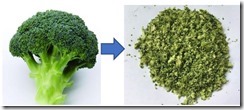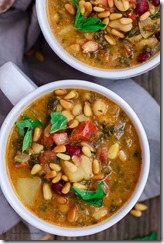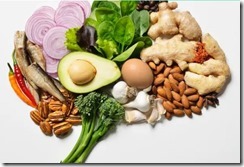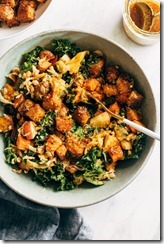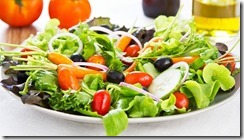Scientists Reveal a Healthier Way to Cook Broccoli – But There’s a Catch
Posted: March 24, 2024 | Author: Millie Barnes | Filed under: Food and it's Impact on Our Health | Tags: #delivery, #glutenfree, #healthyeating, #Lactosefree, #mealdelivery, #MillieBarnes, #nutritioncoaching, #Ortega, #pescatarian, #Riverside, #SanMarco, #soyfree. #freedelivery, #Springfield, #vegetarian, #weightloss | Leave a commentIn recent years, broccoli has gained a reputation as an excellent vegetable due to its high levels of a particularly beneficial compound called sulforaphane.
With some early-stage studies showing how this compound plays a role in blood sugar control and potentially even has anti-cancer benefits, it’s no wonder that broccoli pills are on the rise.
However, a 2011 study showed that eating the whole vegetable gets you more sulforaphane than taking a supplement – so a team of Chinese researchers decided to try and find the best way to cook broccoli.
They arrived at a clear winner, publishing their results in 2018 in the Journal of Agricultural and Food Chemistry – but it’s a tough sell if you have better things to do with your time.
There’s a method behind the madness, though. Sulforaphane doesn’t just sit there in the broccoli florets, ready to be consumed. Instead, the vegetable contains several compounds called glucosinolates.
It also contains the enzyme myrosinase, which plants have evolved for defending themselves against herbivores. Through what’s known as ‘myrosinase activity’, the glucosinolates get transformed into sulforaphane, which is what we want.
To kick myrosinase activity into gear, you need to do damage to the broccoli, so you’d think cooking would do the trick.
Unfortunately, studies have shown that common broccoli cooking methods, like boiling and microwaving, seriously reduce the amount of glucosinolates in the vegetable – even if you just zap it for a couple minutes. And myrosinase is super-sensitive to heat, too.
Hence, by far the largest amount of sulforaphane you can get from broccoli is by munching on raw florets. Ugh.
This got the team of researchers thinking about the results of stir-frying – the single most popular method for preparing vegetables in China.
“Surprisingly, few methods have reported the sulforaphane concentrations in stir-fried broccoli, and to the best of our knowledge, no report has focused on sulforaphane stability in the stir-frying process,” the researchers noted in their study.
The team bought a bunch of broccoli from the local market and set to work, measuring the levels of compounds in the vegetables as they went.
First, they basically pulverized the broccoli, chopping it into 2-millimeter pieces to get as much myrosinase activity going as possible (remember, the activity happens when broccoli is damaged).
Then, they divided their samples into three groups – one was left raw, one was stir-fried for four minutes straight after chopping, and the third was chopped and then left alone for 90 minutes before being stir-fried for four minutes as well.
The 90-minute waiting period was to see whether the broccoli would have more time to develop the beneficial compounds before being lightly cooked.
And that’s exactly what the team found – the broccoli that was stir-fried right away had 2.8 times less sulforaphane than the one left to ‘develop’ for longer.
“Our results suggest that after cutting broccoli florets into small pieces, they should be left for about 90 minutes before cooking,” the team concluded, adding that they didn’t test it but thought “30 minutes would also be helpful”.
We’re not sure we’re willing to commit to all that effort, though. The team does say they’re looking into ways to reduce the chopping needed, so watch this space – or just eat some raw broccoli.
The study was published in the Journal of Agricultural and Food Chemistry.
Mediterranean Bean Soup Recipe With Tomato Pesto
Posted: March 12, 2024 | Author: Millie Barnes | Filed under: Food and it's Impact on Our Health, Recipes | Tags: #delivery, #glutenfree, #healthyeating, #Lactosefree, #mealdelivery, #MillieBarnes, #nutritioncoaching, #Ortega, #pescatarian, #Riverside, #SanMarco, #soyfree. #freedelivery, #Springfield, #vegetarian, #weightloss | Leave a commentThis is my new favorite soup! This Mediterranean three bean soup recipe is one power-packed vegetarian and gluten free dinner to feed a hungry crowd! And if you ever thought beans are boring, this delicious, cozy soup, finished with a bold tomato pesto will blow your mind!
Extra virgin olive oil
1 Large russet potato peeled, diced into small cubes
1 medium yellow onion chopped
1 15- oz can diced tomatoes
1 tablespoon white vinegar
1 tablespoon ground coriander
1 teaspoon Spanish paprika
Salt and pepper
5 cups low sodium vegetable broth, or broth of your choice
8- oz frozen spinach, no need to thaw
15- oz can red kidney beans, drained and rinsed
15- oz can cannellini beans, drained and rinsed
15- oz can chickpeas, drained
Basil leaves for garnish optional
⅓ cup toasted pine nuts for garnish optional
For Tomato Pesto Sauce
2-3 large garlic cloves, you can start with less garlic if you’re not sure
1 ½ cup diced fresh tomatoes
15-20 large basil leaves
½ cup Private Reserve Greek extra virgin olive oil
Salt and pepper
⅓ cup grated Parmesan cheese
-
In a large Dutch oven or heavy pot, heat two tablespoons of olive oil over medium heat until shimmering but not smoking. Add the diced potatoes and onions. Cook for about 4-5 minutes, tossing regularly.
-
Add the canned diced tomatoes, vinegar, spices, salt and pepper. Stir to combine. Cover and cook for another 4 minutes.
-
Uncover, add the vegetable broth and frozen spinach. Raise the heat to medium-high and bring to a boil for 4 minutes or so. Add the kidney beans, cannellini beans, and chickpeas. Bring back to a boil, then reduce heat to medium-low. Cover and cook for another 15 to 20 minutes (potatoes should be tender at this point).
-
While the soup is cooking, make the tomato pesto. In the bowl of a food processor fitted with a blade, place the garlic and fresh tomatoes. Pulse a few times to combine. Add the basil and puree. While the processor is running, drizzle in the olive oil a little bit at a time. Transfer the thick tomato pesto to a bowl, and stir in the grated Parmesan.
-
When the soup is ready, remove from heat. Stir in the tomato pesto.
-
Transfer to serving bowls. Top each bowl with a few basil leaves and toasted pine nuts.
A Harvard Nutritionist and a Neuroscientist Agree This is the No. ONE Food for a Healthy Brain
Posted: March 12, 2024 | Author: Millie Barnes | Filed under: Food and it's Impact on Our Health | Tags: #delivery, #glutenfree, #healthyeating, #Lactosefree, #mealdelivery, #MillieBarnes, #nutritioncoaching, #Ortega, #pescatarian, #Riverside, #SanMarco, #soyfree. #freedelivery, #Springfield, #vegetarian, #weightloss | Leave a commentWhat you eat can, and does, impact the function of your brain, including your ability to ward off Alzheimer’s disease and there are certain foods — like sunflower seeds and whole grains — that provide greater benefits.
There is one food in particular that Dr. Uma Naidoo, a Harvard nutritionist, and Lisa Genova, a Harvard-trained neuroscientist, say is the key to a healthy brain: Green leafy vegetables.
The No. 1 food for a healthy brain: Green leafy vegetables
Across the board, experts agree that eating leafy greens is essential for overall health, especially for your brain.
Some of the green leafy vegetables that you can add to your meals are:
- Kale
- Spinach
- Lettuces
- Cabbage
- Swiss chard
- Bok choy
- Mustard greens
3 reasons experts say a diet rich in leafy greens is good for your brain
1. They’re rich in B vitamins
Often, conditions like depression and dementia are associated with a vitamin B deficiency, according to a study from the Wayne State University School of Medicine.
Green leafy vegetables are a wonderful source of vitamin B9, Naidoo told CNBC Make It in 2022. The vitamin, also known as folate, is “a key vitamin for supporting brain and neurological health, optimal neurotransmitter function, and balanced psychological health,” she added.
Leafy greens are the first type of food that Naidoo suggests for her patients who are looking to boost their mood.
2. They’re high in brain-boosting nutrients
Green leafy vegetables are also full of what Genova calls “brain-boosting nutrients” including folate, lutein and beta-carotene.
Lutein has been linked to an improvement in brain function and brain structure for older adults. And a systematic review found that taking beta-carotene supplements can boost “verbal and cognitive memory.”
3. They’re full of fiber
Increasing intake of dietary fiber was associated with a lower chance of developing depression, a study published in “Complementary Therapies in Medicine” in 2021 found.
Naidoo prefers to recommend getting more fiber through your diet, specifically plant-based foods. And leafy greens just so happen to be fiber-dense.
Want A Healthier Brain Over 40? Sip On These 5 Beverages Every Day For Sharper Memory & Cognitive Function
Posted: March 12, 2024 | Author: Millie Barnes | Filed under: Food and it's Impact on Our Health | Tags: #delivery, #glutenfree, #healthyeating, #Lactosefree, #mealdelivery, #MillieBarnes, #nutritioncoaching, #Ortega, #pescatarian, #Riverside, #SanMarco, #soyfree. #freedelivery, #Springfield, #vegetarian, #weightloss | Leave a commentAs we age, maintaining cognitive function and memory becomes increasingly important. There are several healthy habits you can incorporate into your daily routine in order to preserve your brain health—and one of the best things you can do is prioritize a heart-healthy diet. Fortunately, incorporating certain beverages into your daily routine can support brain health and fend off age-related decline.
To discover some of the best beverages for the job, we spoke to dietitian nutritionist Krutika Nanavati. She shed some light on five great options: green tea, coffee, turmeric lattes, water, and blueberry juice. Learn more about the benefits of each below.
As we age, maintaining cognitive function and memory becomes increasingly important. There are several healthy habits you can incorporate into your daily routine in order to preserve your brain health—and one of the best things you can do is prioritize a heart-healthy diet. Fortunately, incorporating certain beverages into your daily routine can support brain health and fend off age-related decline.
To discover some of the best beverages for the job, we spoke to dietitian nutritionist Krutika Nanavati. She shed some light on five great options: green tea, coffee, turmeric lattes, water, and blueberry juice. Learn more about the benefits of each below.
1. Green Tea
Nanavati highlights green tea as a powerhouse beverage for cognitive function and memory. She says antioxidants called catechins are largely to thank for these benefits. “Green tea is great for cognitive function and memory, especially for those over 40,” she says, noting that catechins “protect the brain from oxidative stress and reduce the risk of neurodegenerative diseases. Green tea also has caffeine, which can boost mood, reaction time, and memory.” Plus, it’s great for weight loss—what’s not to love?
2. Coffee
Coffee isn’t just a delicious morning ritual that can give you a much-needed energy boost; in addition to potential fat-burning properties, Nanavati says it can also do wonders for your brain. “Coffee, like green tea, contains caffeine and antioxidants,” she explains. “Caffeine blocks the adenosine receptor in the brain, improving cognitive function, mood, and alertness. Regular coffee consumption is linked to lower risks of Alzheimer’s and Parkinson’s.” Sign us up!
3. Turmeric Lattes
Turmeric is one of the healthiest spices out there thanks to its inflammation-fighting properties. As it turns out, it can also help boost your memory and cognitive function when consumed on a regular basis. “Turmeric contains curcumin, which has anti-inflammatory and antioxidant benefits,” Nanavati emphasizes. “It can improve brain function and delay age-related decreases by boosting brain-derived neurotrophic factors and reducing inflammation.” Plus, it’s delicious! Creating a latte with this spice is a great way to reap these benefits and enjoy a tasty, earthy beverage.
4. Water
This one may be a no-brainer, but it’s impossible to overestimate the importance of proper hydration to your overall health, including when it comes to your brain. “Hydration plays a critical role in maintaining cognitive function and memory,” Nanavati stresses. “Even mild dehydration can impair attention, memory, and mood. Consuming adequate water daily is essential for overall brain health and function, especially for individuals over 40, to combat age-related decreases in water conservation by the body. Got it!
5. Blueberry Juice
When you’re craving something fruity that’s also good for your brain, reach for some blueberry juice! Nanavati recommends this beverage as a potent beverage for brain health, citing its high content of flavonoids, “which possess antioxidant and anti-inflammatory properties. These substances can improve communication between brain cells and increase plasticity, which helps brain cells form new connections, improving memory and cognitive functions,” she says. “Regular consumption of blueberry juice could offer protection against memory loss and cognitive decline.” Yum! Just be sure to watch out for the sugar content in the juice you choose, as consuming too much can ultimately do more harm than good.
he bottom line
While the drinks you choose shouldn’t be the end all, be all of your brain-healthy habits, incorporating these five beverages into your daily routine can certainly contribute to maintaining a healthier brain as you age. Whether you prefer a soothing cup of green tea, a revitalizing coffee, or a refreshing glass of blueberry juice, each sip can help support cognitive function and memory, allowing you to stay sharp and focused well into your golden years.
My Skin Care Routine for Mature Skin
Posted: February 23, 2024 | Author: Millie Barnes | Filed under: Skin Care | Tags: #delivery, #glutenfree, #healthyeating, #Lactosefree, #mealdelivery, #MillieBarnes, #nutritioncoaching, #Ortega, #pescatarian, #Riverside, #SanMarco, #soyfree. #freedelivery, #Springfield, #vegetarian, #weightloss | Leave a comment|
AM |
PM |
|
|
Cleanse or Water |
DBL Cleanse if wearing makeup |
|
|
MILD Toner w/ Lactic Acid The Ordinary 2% Retinol Serum in Squalane |
Glycolic → Mon/Thur SKIP Niacinamide |
Exfoliate Stronger Toner, BHA or Lactic Acid 12% |
|
Serums; (Pick 3 each day) ↓ Vitamin C- Sun/T/Th Peptides- M/W/F Ferulic Acid Niacinamide Alpha Albutrin |
Eyes; hyaluronic Acid Moistener Then mild Retinol |
|
|
Moisturizer with Vitamin E OR (if going to be outdoors at all) Sunscreen |
Buffer if needed→ |
Retinol |
|
Note; I mist my face with a toner( I make it myself with fresh aloe, green tea extract, rice water, and glycerin and 4% lactic Acid) in between each step |
Serums;; Peptides w/ Niacinamide powder Moisturizer Occlusive or Oil with TO 5% Retinol |
|
Cleansing Balm (also great balm or moisturizer)
Posted: January 13, 2024 | Author: Millie Barnes | Filed under: Recipes, Skin Care | Tags: #delivery, #glutenfree, #healthyeating, #Lactosefree, #mealdelivery, #MillieBarnes, #nutritioncoaching, #Ortega, #pescatarian, #Riverside, #SanMarco, #soyfree. #freedelivery, #Springfield, #vegetarian, #weightloss | Leave a comment2 tablespoons shea butter
1 tablespoon coconut oil
4 cocoa butter disks (about 1 T solid cocoa butter)
1 teaspoon calendula or chamomile oil
5 drops geranium essential oil
5 drops frankincense essential oil
5 drops bergamot essential oil
- Empty glass jar with lid.
Place shea butter, coconut oil and cocoa butter disks in a glass bowl.
Place over double boiler and melt.
Stir until melted.
Repeat until all ingredients are melted.
Let cool slightly until mixture is slightly warm but not hot.
Add calendula oil and essential oils and mix well.
Pour mixture into glass, metal or plastic jars.
Wait for cleansing balm to cool completely and solidify before using. Refrigerate if desired to speed up the process.
Makes about 1/3 cup – enough for one jar of cleaning balm.
Moisturizing Toner
Posted: January 13, 2024 | Author: Millie Barnes | Filed under: Skin Care | Tags: #delivery, #glutenfree, #healthyeating, #Lactosefree, #mealdelivery, #MillieBarnes, #nutritioncoaching, #Ortega, #pescatarian, #Riverside, #SanMarco, #soyfree. #freedelivery, #Springfield, #vegetarian, #weightloss | Leave a comment1 cup distilled water made with strong green tea (I use matcha)
or
1 cup distilled water with green tea extract
3 Tablespoons fresh aloe gel
1/3 teaspoon Hyaluronic acid
few drops of glycerin
1/3 teaspoon red sea algae
1/3 teaspoon mild lactic acid
1/3 teaspoon Germall+
Blend all ingredients except Germall and blend well, I use my Nutiibullet but a blender works also.
Then add the Germall and shake well.
I keep a small amount in a spray bottle for using between layers of skin care but keep the rest in the refrigerator.
Maple Mustard Tempeh Sweet Potato Bowl
Posted: November 26, 2023 | Author: Millie Barnes | Filed under: Recipes | Tags: #delivery, #glutenfree, #healthyeating, #Lactosefree, #mealdelivery, #MillieBarnes, #nutritioncoaching, #Ortega, #pescatarian, #Riverside, #SanMarco, #soyfree. #freedelivery, #Springfield, #vegetarian, #weightloss | Leave a commentMaple Mustard Tempeh Bowls
The Maple-Mustard Dressing:
1/4 cup maple syrup
1/4 cup stone ground mustard
2–3 tablespoons soy sauce
2–3 tablespoons olive oil
The Bowl Stuff:
2 sweet potatoes, peeled and diced
2 blocks tempeh, cubed
3–4 cups kale, cut into small pieces
1 avocado
Other toppings / add-ins: crispy onions, pecans, apples, dried cranberries
Make the dressing and marinate tempeh: Preheat the oven to 425 degrees. Make dressing. Marinate the tempeh in about half of the dressing for about 30 minutes.
Roast tempeh and sweet potato: Place marinated tempeh (with marinade) on a baking sheet. Roast for 25-30 minutes. Remove Tempeh. Finish Roasting until the potatoes are done. When both are browned and roasted, toss the tempeh with a little more dressing so it soaks up lots of mapley-mustardy flavor.
Steam the kale, toss with dressing. Smash the avocado just a little bit of dressing.
Toss and serve: Toss up the roasted tempeh, sweet potato, kale, sauerkraut, in a big bowl with any other extras that you like.
Why Exercise Has Little Effect On Weight Loss
Posted: November 7, 2023 | Author: Millie Barnes | Filed under: Food and it's Impact on Our Health | Tags: #delivery, #glutenfree, #healthyeating, #Lactosefree, #mealdelivery, #MillieBarnes, #nutritioncoaching, #Ortega, #pescatarian, #Riverside, #SanMarco, #soyfree. #freedelivery, #Springfield, #vegetarian, #weightloss | Leave a commentWhat Effect Does Exercise have on Obesity and Weight Loss?
I had someone tell me today that he works out two hours a day, is incredibly strong (I guess so!) and cannot lose weight. He showed me the “healthy” snack he had with him; a granola crunch bar. I read the ingredients. Rice flour, oat flour, fructose. So far we are at all carbs. Next comes soy oil. Yuck. And about 20 more ingredients from there…So we talk, really talk. I explain to him what a great breakfast, nutritionally speaking, looks like; organic eggs for breakfast, cooked in coconut oil or butter. Three strips of turkey bacon, a handful of blueberries, some organic coffee. This is my breakfast most mornings. With a third of my calories for the day, RARING to go for 5-6 hours without even thinking about food. Enough fat, protein and nutrient packed carbs (fruits and veggies!) at every meal, 3 times a day. 2000 calories a day, every day. Healthy rapid weight loss occurs, energy quickly returns, you sleep better, feel wonderful upon awakening…and get in some play time each day. THAT is the way too lose weight. The ONLY healthy way there is. Period.
Let’s look at trying to exercise enough to lose weight;
- It takes 35 miles of walking or jogging to burn the calories in one pound of fat. Losing weight requires optimum nutrition; a balance of healthy fats, protein, fruits, and vegetables. In addition, if a person exercises but doesn’t diet any actual pounds lost may be minimal because dense and heavier muscle mass replaces fat.
- Also bear in mind that vigorous exercise such as jogging or running on hard surfaces is essentially unnatural to the body and can lower the immune response. Human beings in virtually every culture have typically, throughout time, engaged in anaerobic functional exercise common to regular labor or work functions on the farm, at sea or while hunting wild game, punctuated by occasional bursts of intense activity. Getting on the treadmill, running, or jogging is not that affective for weight loss, is hard on the joints, and wears you out. Use that same energy for weight training, bursts of hard work such as gardening, surfing, dancing, yoga or sex! You will be in better shape, get toned faster…and save a lot of time that is wasted on the treadmill!
- While exercise has little impact on weight loss (that comes from eating enough calories that contain all the nutrients you need on a day to day basis) a fit body will look more toned and be healthier. And exercise even without dieting adds benefit. For example, one study found that overweight but fit people have half the death rate of overweight and unfit people. And, studies suggest that people who have trained for a long time develop more efficient mechanisms for burning fat and are able to stay leaner.
- Exercise is vitally important, it helps us stay in shape, stimulates and improves cardiovascular health, helps make us happier and gets us into the sunshine we need so badly. This should include cardiovascular and resistance training. Every type of exercise that you do for resistance should be balanced with stretching exercises. This is called cross training. Most types of resistance training or repetitive movements cause some of our muscles to shorten. You need to balance this with stretching these muscles very well. I mean serious stretching, not what we usually do for five minutes before we run! I mean a true warm up. When we try to stretch without warming the muscles up, we can pull muscles or tendons. We only are able to stretch effectively when our muscles are truly warmed up.
I think yoga is the perfect cross training for almost every other form of exercise. Plus, it is also tones muscles, helps us detox, aids digestion and stills the mind. It is a perfect way to learn to meditate. If someone told me I had to choose just one type of exercise, then yoga would be my first choice. It is also important that find something that you love to do every day that will help you gain cardiovascular health. I mean something that will make you work up a serious sweat! Notice I say find something you love to do. Very few people really love aerobics classes. They are not that effective in toning muscles. You are better off riding a bike, running, rollerblading, surfing, dancing,playing soccer or tennis, . These things are so much fun that they tend to be things you love to do, instead of things you make yourself do in order to get in shape. You’re more likely to do them more often.
Weight training should be practiced 3 to 4 times a week in order to build bone and muscle mass. You may find it very effective to work with a personal trainer or find a workout buddy in the first few months. This will keep you motivated. The hardest part of getting on a regular schedule of exercising is getting started. In the beginning, it seems harder to fit it into our schedules. We get sore and tired. But after a few weeks you reach the point where you see results, you’re sleeping better, feeling energized. You notice that you don’t feel as good on the days you don’t exercise. You feel edgy. I love those endorphins!
But to lose 5 pounds a week AND meet out nutrient and energy needs you need 2000 calories a day. You won’t get weight lose by caloric restriction, that has been proven. At that rate of caloric intake your body is in starvation mode; So eat plenty of healthy fats, get plenty of high quality protein and eat ½ way down the glycemic index…including plenty of green leafy veggies each day. Did you know that green leafy vegetables have NO glycemic scale whatsoever and offer you a depth of nutrients that includes plenty of calcium? They must be cooked with saturated fats to assimilate the nutrients, so use butter or animal fats to cook with.
Yes, eggs cooked in butter is a great breakfast!
Slow walking- 115 to 200
Hula Hooping with Weighted Hula Hoop – 115
Dancing- 275 to 350
Skating or swimming- 300 to 600
Tennis- 350 to 700
Gardening- 250 to 300
Golfing- (18 holes)- 150 to 225
Ashtanga Yoga (1 hour) – 351
Driving- 144
Cooking- 180
Housework- 198
Surfing- 207
Weight lifting – general- 234
Sex – 288
Ashtanga yoga- 351
Pilates Intermediate- 351
Hiking- 405
Aerobics – low impact- 414
Aerobics – high impact 477
Bicycling / cycling 12-14 mph 594
Canoeing 4 mph- 630
Rope jumping- 684
What are the Benefits of Eating Salads?
Posted: October 17, 2023 | Author: Millie Barnes | Filed under: Food and it's Impact on Our Health | Tags: #delivery, #glutenfree, #healthyeating, #Lactosefree, #mealdelivery, #MillieBarnes, #nutritioncoaching, #Ortega, #pescatarian, #Riverside, #SanMarco, #soyfree. #freedelivery, #Springfield, #vegetarian, #weightloss | Leave a commentAs you can see, fitting healthy salads into your diet provides a variety of benefits. Not only are the packed full of healthy nutrients, but they can also help you feel full, give your body better access to vitamins and minerals, assist you with weight loss, and even keep you cool.
1. Healthy Salads Help You Get Enough Fruits and Vegetables
Some people struggle when it comes to eating enough fruits and vegetables to maintain a healthy diet. Having a fresh salad every day can make it easy to get all of the servings you need, plus it supports a clean eating lifestyle.
Dark leafy greens and brightly coloured vegetables ensure you get a range of vitamins and minerals, helping you to maintain a healthy body and mind. They are also overflowing with antioxidants, important chemicals in the fight against cancer-causing free radicals. To get the most benefit, try to keep the majority of the ingredients in their raw form. These pack the biggest punch when it comes to creating a truly healthy salad, plus they’re full of flavour and satisfying crunch.
2. Vegetable and Fruit Salads are Full of Fibre
Fibre is a wonderful thing; it helps you feel full longer and can provide a range of health benefits. For example, a fibre-rich diet can help alleviate and prevent constipation and lower cholesterol. It can also make it easier to maintain a healthy body weight which reduces your risk of developing heart disease and diabetes. Your blood sugar levels may also stay more even, helping to prevent cravings for sugary foods.
3. Healthy Salads Cut Calorie Consumption
For people interested in losing weight, adding a healthy salad to every meal can be an excellent way to go. As mentioned before, a salad contains valuable fibre, which helps you feel full and satisfied. And, if you start a meal with a salad, you’ll have less room for higher-calorie options that form the rest of the meal.
Dark, leafy greens are very nutrient dense, meaning they provide a lot of nutrition with a limited number of calories. That means a salad with a large serving of spinach, kale, or Romaine creates a strong foundation for weight loss. Just make sure to use higher calorie options sparingly. Cheese, nuts, and dressings can add a lot of calories quickly, so use enough to get a sense of the flavour and texture and stop there. However, many other fruits and vegetables can make a salad exciting and satiating without allowing you to pack on the pounds, so explore your clean eating options and choose items that leave you feeling satisfied.
4. You’ll Get Access to Good Fats
While salad ingredients can contain fats, most of them are of the healthier varieties than you find in items like meat. For example, olive oil, nuts, and avocados all have fat, but of the monounsaturated variety. These not only help you feel more satisfied, but they also ensure your body can absorb other key nutrients found in fruits and vegetables more effectively.
Certain vitamins are fat-soluble, meaning they need fat to be present to aid absorption. Vitamins A, D, E, and K all fall into this category, so you need to consume an appropriate amount of healthy fat, like omega-3, to make sure these vitamins are making it to critical body systems.
Phytochemicals also seem to be easier to absorb when combined with healthy fats. These important chemicals help protect the body from conditions like cancer and heart disease, so eating enough fat to get their value is important, just make sure it is a healthy version, like the above mentioned monounsaturated options or the polyunsaturated variant found in soya beans, walnuts, and flaxseeds.
5. A Salad Provides Water
Some people are surprised to hear that fruits and vegetables are actually great sources of water. In fact, watermelon and strawberries are around 92 percent water while cucumber and certain lettuces are a startling 96 percent water. Eating a combination of vegetables and fruits will high water contents can help you stay hydrated even if you don’t have the opportunity to grab a glass of water to drink. Plus, the water consumption from foods does count towards your daily needs. So, if you aren’t getting multiple glasses of water in during the day, choosing a salad can help make up for it.
Further, the vitamins that aren’t in the fat-soluble category are water soluble instead. This means they need water to be absorbed by the body. This group includes the range of B vitamins, including riboflavin, niacin, B12, and folic acid, as well as vitamin C.
Other fruits and vegetables with high water content include grapefruit, peaches, oranges, tomatoes, spinach, and broccoli.
6. Salads Can Cool You Down
Whether it is a traditional lettuce-based version or a fruit salad, the cool ingredients can help you feel refreshed during the summer heat. Often, as temperatures rise, hot meals become less appealing. But consuming healthy ingredients is critical all year round if you want to maintain optimal health.
When looking for the best salad in Dubai or Saudi, look to beat the sweltering heat with ingredients like dark, leafy greens, citrus fruits, and refreshing vinaigrettes. A slightly tart flavour can make you feel rejuvenated while fibre-rich vegetables ensure you’ll feel full. If you want to add protein, look for lighter options like grilled chicken or salmon, as they won’t weigh you down as red meats can. Plus, those options also have fewer calories, helping you stay trim.
As you can see, fitting healthy salads into your diet provides a variety of benefits. Not only are the packed full of healthy nutrients, but they can also help you feel full, give your body better access to vitamins and minerals, assist you with weight loss, and even keep you cool. If you are interested in finding the best salad in Dubai, UAE and Saudi, we have a range of options sure to satisfy any appetite and support your clean eating goals. Come in today to explore the full menu and see how adding fresh, healthy salads can benefit your body.
